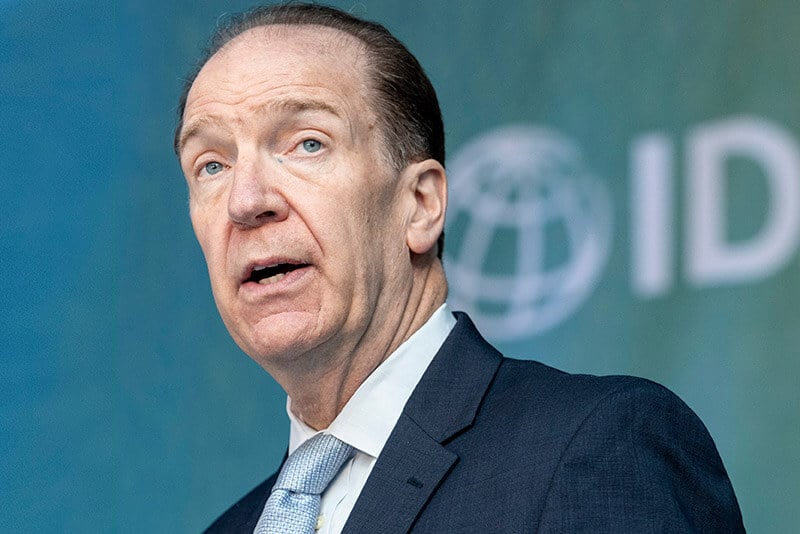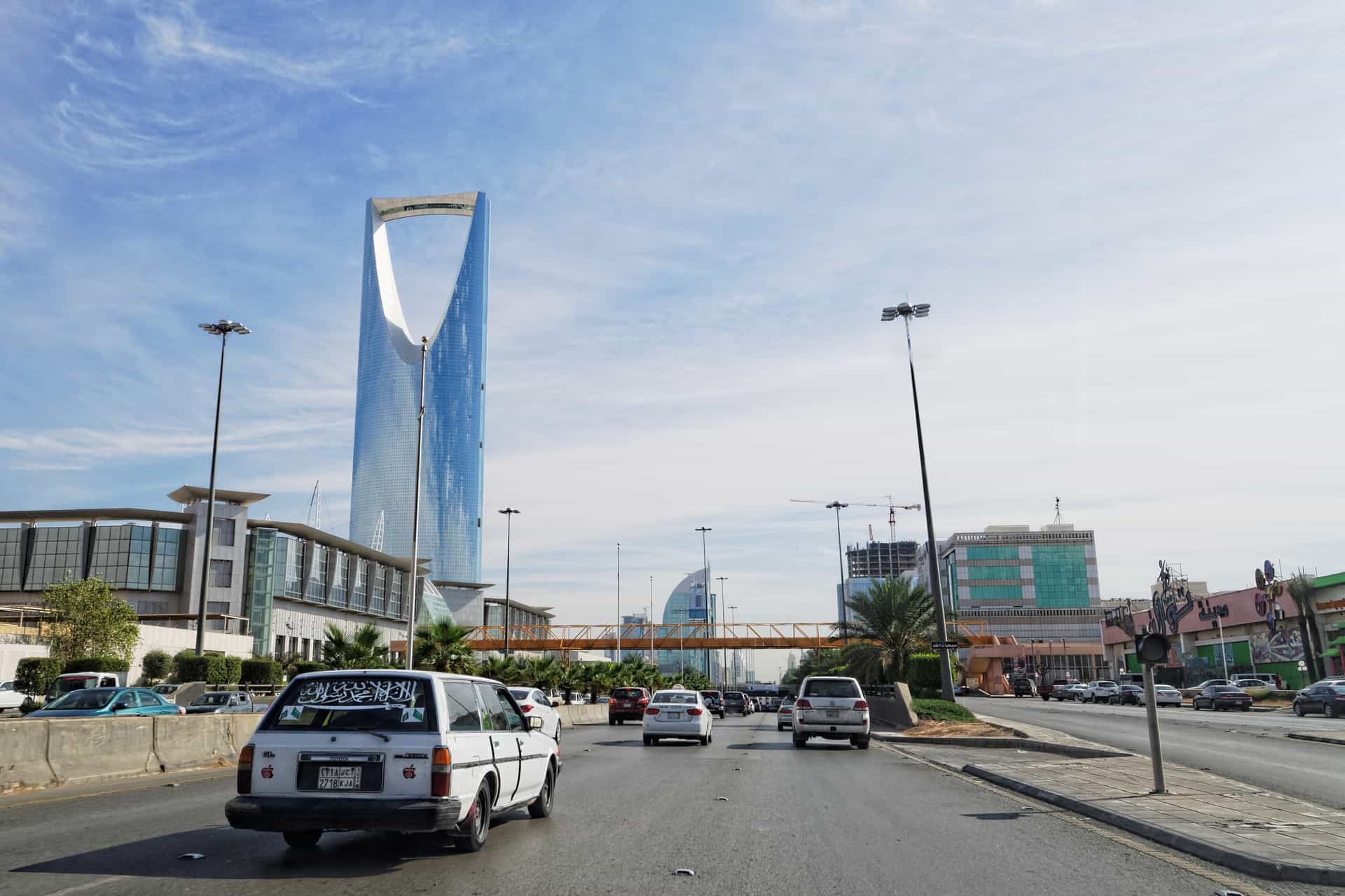The World Bank has said that the average growth of 5.3 percent for the MENA region in 2022, its fastest pace in a decade, masks a highly “differentiated experience and a trend in the wrong direction”.
The Bank said in its latest Global Economic Prospects report that growth will slow abruptly in 2023 and 2024 across the region.
The current rebound is due mainly to strong growth in oil exporters boosted by rising oil revenues and a general waning of the pandemic’s adverse impacts in highly vaccinated countries.

GCC economies are forecast to grow by 5.9 percent in 2022, 1.2 percentage points higher than forecast at the start of the year.
In Saudi Arabia, strong oil production growth and a robust recovery in the non-oil sector is expected to drive 2022 growth to a decade high of 7 percent, before slowing to 3.8 percent in 2023.
The United Arab Emirates should also benefit in the near term from rising oil prices, while in the medium term, reforms to deepen capital markets, increase labor market flexibility, and accelerate technological innovation will support growth.
Output in Iran is expected to grow by 3.7 percent in 2022, boosted by a waning of the pandemic and higher oil prices and strong progress on vaccinations.
Growth is expected to slow subsequently, however, as unresolved structural challenges and feeble fixed investment limit potential growth.
Iraq’s GDP is forecast to grow by 8.8 percent in 2022, driven by a rebound in the oil sector as OPEC+ production limits are phased out.
However, electricity shortages, aggravated by energy import disruptions, and absorptive capacity constraints limit growth in the non-oil sector.
Output of oil importers is expected to grow by 4.1 percent in 2022, a 0.5 percentage point downward revision, before accelerating to 4.4 percent in 2023. These headline numbers reflect highly fragile recoveries and the impact of acceleration in Egypt, where stronger-than-expected activity for the first half of the fiscal year saw growth revised up to 6.1 percent in FY2021/22.
Growth is expected to moderate to 4.8 percent in FY2022/23, a 0.7 percentage point downgrade, as a decline in tourism as a result of the Ukraine war and rising food and energy inflation dampens domestic demand and squeezes the budget.
In Morocco, growth is expected to slow significantly, to 1.1 percent in 2022, as the compounded impacts from drought and the war in Ukraine outweigh the tentative services sector recovery.
Lebanon faces another year of decline amidst increased poverty, rampant inflation, and disruption to core services; and real GDP is projected to contract for the fourth consecutive year further pushing down real GDP per capita and reducing the purchasing power of wage earners.
Tunisia’s modest growth is far short of potential, particularly given the level of unemployment.
Risks stay
Risks to growth remain to the downside. Increasing uncertainty, including through food and oil price and financial market volatility, could undermine consumption, investment, and capital flows in the region.
Further increases in food inflation, already at decade highs, could erode real incomes undermining food security and increasing the incidence of undernourishment and negative coping strategies.
Faced with a series of shocks, reform momentum has dissipated in the region, and the private sector is not investing.
This, combined with high debt levels and limited fiscal space, and falling purchasing power, increase vulnerabilities particularly in oil importing economies.
Recent developments
At the turn of the year, the Middle East and North Africa (MNA) region was already struggling to make inroads on the lost growth and jobs due to COVID-19.
The pandemic had come on top of a lost decade for many people of the region, due to compounded crises of political instability and conflict.
For Lebanon, the port explosion and debt crisis added to the misery. Yet the much-needed growth was sapped by Omicron outbreaks and the spillover from withdrawal of policy support in advanced economies, on which the region depends heavily for tourism and trade.
This difficult backdrop was followed by the Russian Federation’s invasion of Ukraine; however, its economic impact on the region has been mixed, with a net benefit to oil exporters but a double blow of higher food and fuel prices for oil importers.
Non-GCC oil exporters face numerous constraints to increase oil production; for example, despite the desperate need for foreign exchange in the Republic of Yemen, the prolonged conflict has almost completely shut down export earnings from the hydrocarbon sector, thus compounding the devastation from the conflict, which has brought about an unprecedented humanitarian crisis.
Households – especially the most disadvantaged – are hard hit: the median annual consumer inflation is at its highest level since the great recession of 2009 and at almost double the rate of increase seen in the decade prior to the pandemic.
In oil exporters, who also tend to have higher vaccination rates, higher oil prices and rising production have assisted in maintaining robust rebounds, partly offset by higher food prices and borrowing costs.
In members of the Gulf Cooperation Council (GCC), daily oil production was about 3 million barrels higher than a year ago in April.
Non-GCC oil exporters face numerous constraints to increase oil production; for example, despite the desperate need for foreign exchange in the Republic of Yemen, the prolonged conflict has almost completely shut down export earnings from the hydrocarbon sector, thus compounding the devastation from the conflict, which has brought about an unprecedented humanitarian crisis.
For oil importers, the fragile rebound has been derailed by higher food and energy prices, rising borrowing costs, and weakening external demand. The scarring from the pandemic in terms of lost jobs and higher debt remains.
In the Arab Republic of Egypt, the robust growth in the first half of the fiscal year has slowed abruptly amid rising inflation; consumer inflation is again back to double-digit annual rates, reducing household incomes and worsening competitiveness for Egyptian firms.
Morocco faces another severe drought that will affect agricultural output. In Tunisia, the recovery was only modest in 2021 and the country is facing multiple economic shocks with no access to international market financing, while in the midst of a complex political transition.
Unemployment in Tunisia remains elevated at 16.1 percent, with no space for policy stimulus.
Global Stagflation Risk Rises Amid Sharp Slowdown
Compounding the damage from the COVID-19 pandemic, the Russian invasion of Ukraine has magnified the slowdown in the global economy, which is entering what could become a protracted period of feeble growth and elevated inflation. This raises the risk of stagflation, with potentially harmful consequences for middle- and low-income economies alike.
Global growth is expected to slump from 5.7 percent in 2021 to 2.9 percent in 2022— significantly lower than 4.1 percent that was anticipated in January.
It is expected to hover around that pace over 2023-24, as the war in Ukraine disrupts activity, investment, and trade in the near term, pent-up demand fades, and fiscal and monetary policy accommodation is withdrawn. As a result of the damage from the pandemic and the war, the level of per capita income in developing economies this year will be nearly 5 percent below its pre-pandemic trend.

